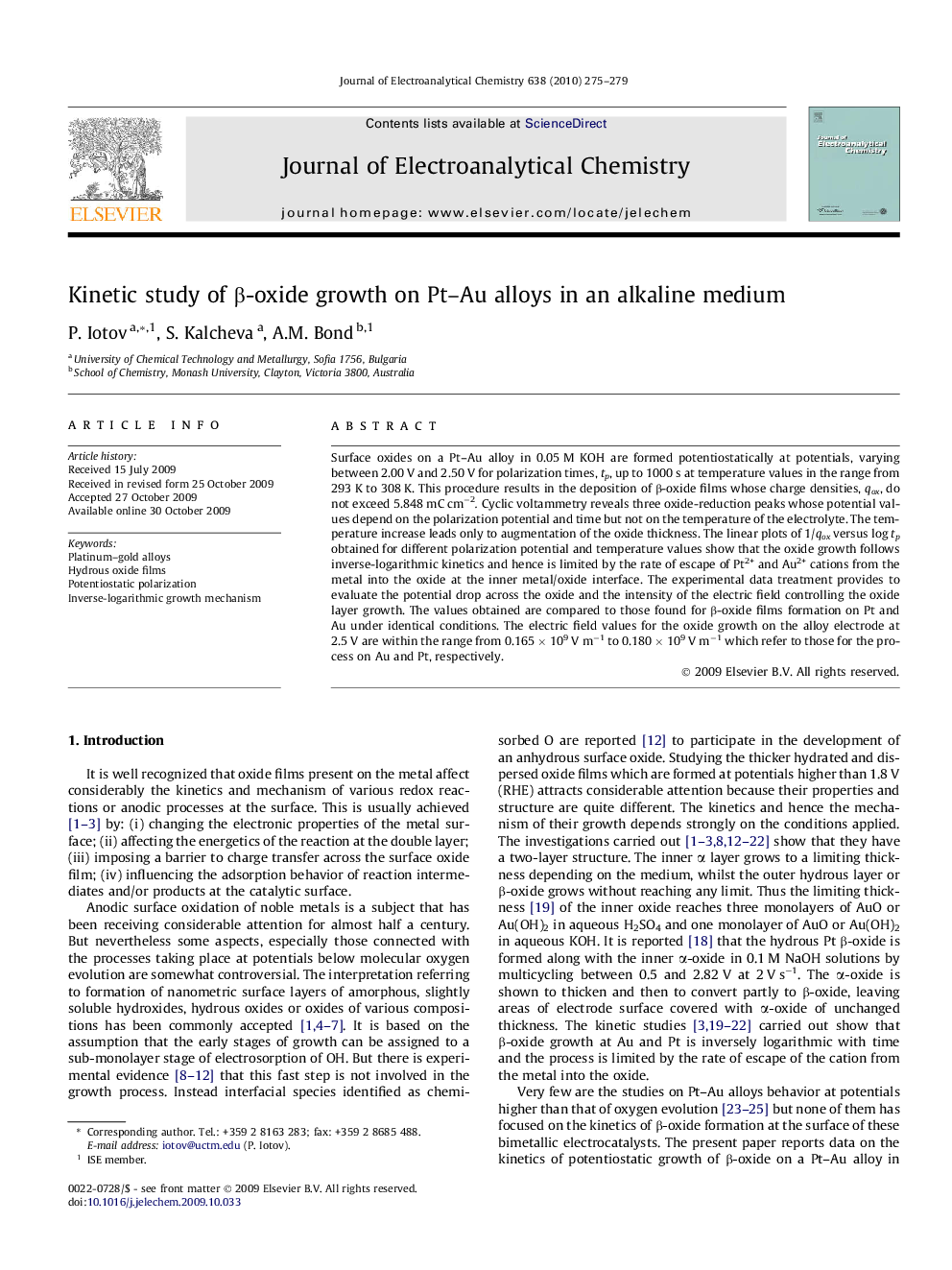| Article ID | Journal | Published Year | Pages | File Type |
|---|---|---|---|---|
| 219997 | Journal of Electroanalytical Chemistry | 2010 | 5 Pages |
Surface oxides on a Pt–Au alloy in 0.05 M KOH are formed potentiostatically at potentials, varying between 2.00 V and 2.50 V for polarization times, tp, up to 1000 s at temperature values in the range from 293 K to 308 K. This procedure results in the deposition of β-oxide films whose charge densities, qox, do not exceed 5.848 mC cm−2. Cyclic voltammetry reveals three oxide-reduction peaks whose potential values depend on the polarization potential and time but not on the temperature of the electrolyte. The temperature increase leads only to augmentation of the oxide thickness. The linear plots of 1/qox versus log tp obtained for different polarization potential and temperature values show that the oxide growth follows inverse-logarithmic kinetics and hence is limited by the rate of escape of Pt2+ and Au2+ cations from the metal into the oxide at the inner metal/oxide interface. The experimental data treatment provides to evaluate the potential drop across the oxide and the intensity of the electric field controlling the oxide layer growth. The values obtained are compared to those found for β-oxide films formation on Pt and Au under identical conditions. The electric field values for the oxide growth on the alloy electrode at 2.5 V are within the range from 0.165 × 109 V m−1 to 0.180 × 109 V m−1 which refer to those for the process on Au and Pt, respectively.
